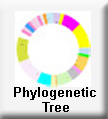
|
Syn.:
|
Criconemoides macrodorum Taylor, 1936
Criconemella macrodorus (Taylor) Luc & Raski, 1981 Criconema goffarti Volz, 1951 Criconemoides goffarti (Volz) Goodey, 1963 Criconemella goffarti (Volz) Siddiqi, 1986 Criconemoides juniperi Edward & Misra, 1964 Criconemella juniperi (Edward & Misra, 1964) Siddiqi, 1986 |

This species included in the Criconematid Project
DNA Sequences Obtained:
Specimen:
Collected:
| 16512 | Grinnell College CERA site, Iowa |
| 16513 | Grinnell College CERA site, Iowa |
| 16875 | Blue Mounds, Wisconsin |
| 16876 | Blue Mounds, Wisconsin |
| 16877 | Blue Mounds, Wisconsin |
| 16878 | Blue Mounds, Wisconsin |
| 16798 | Minneapolis, Minnesota |
| 16799 | Minneapolis, Minnesota |
 |
 |
 |